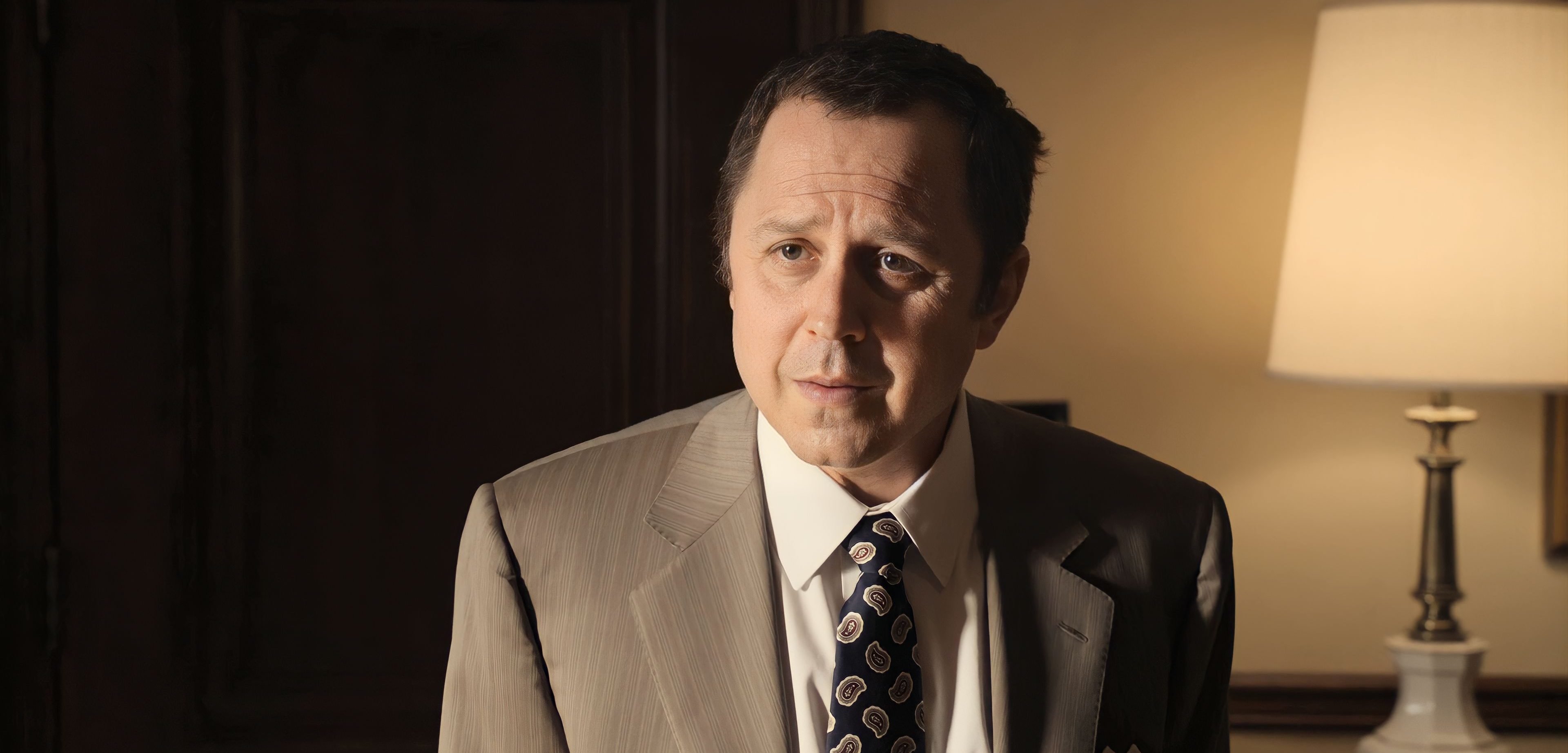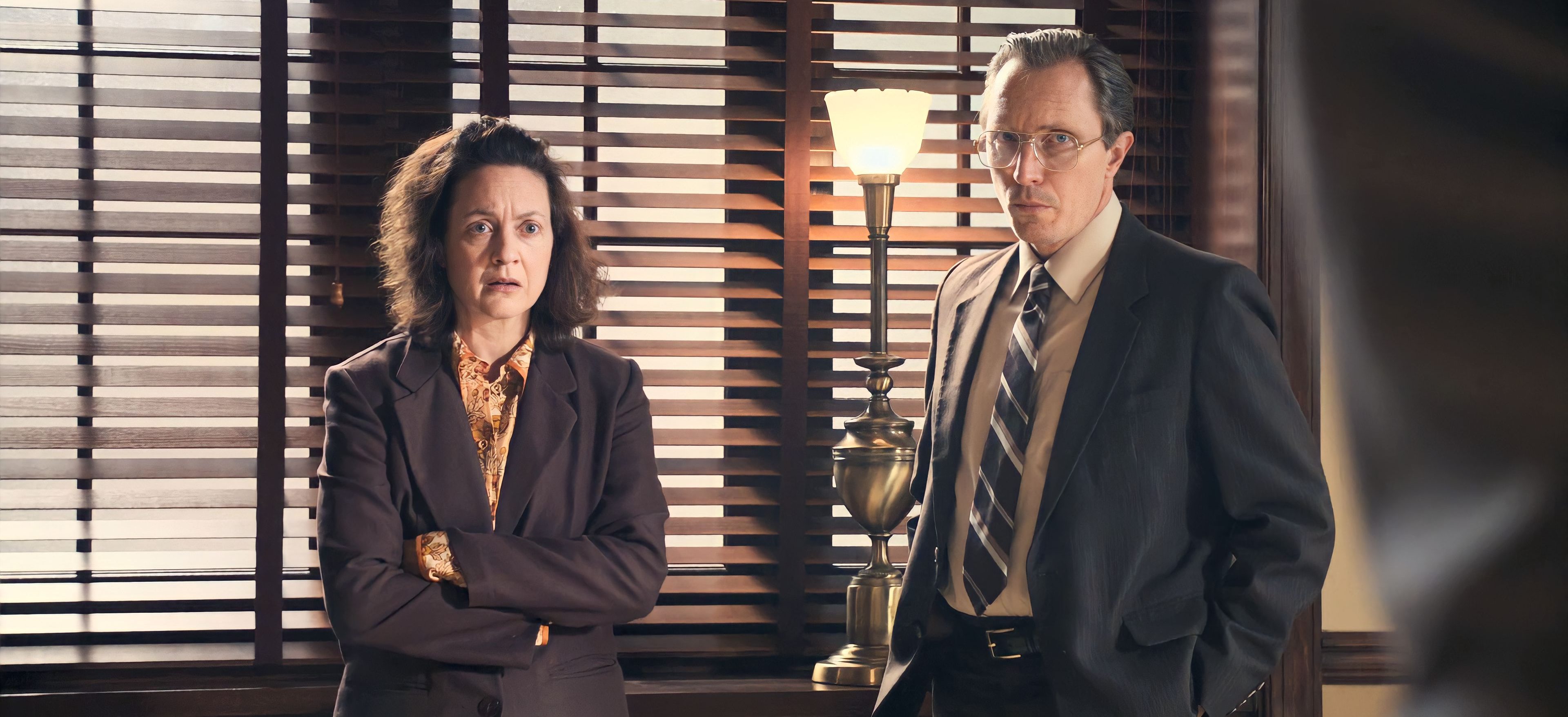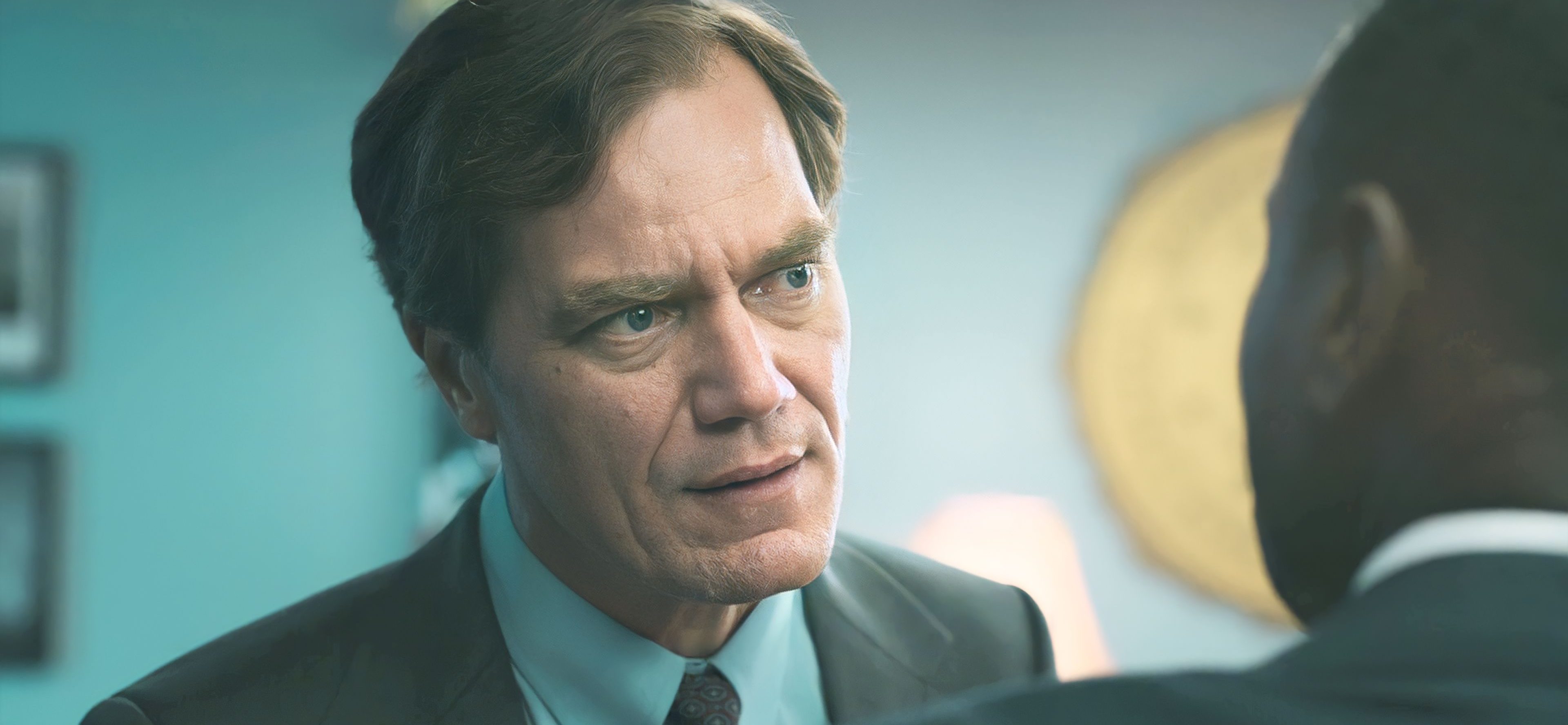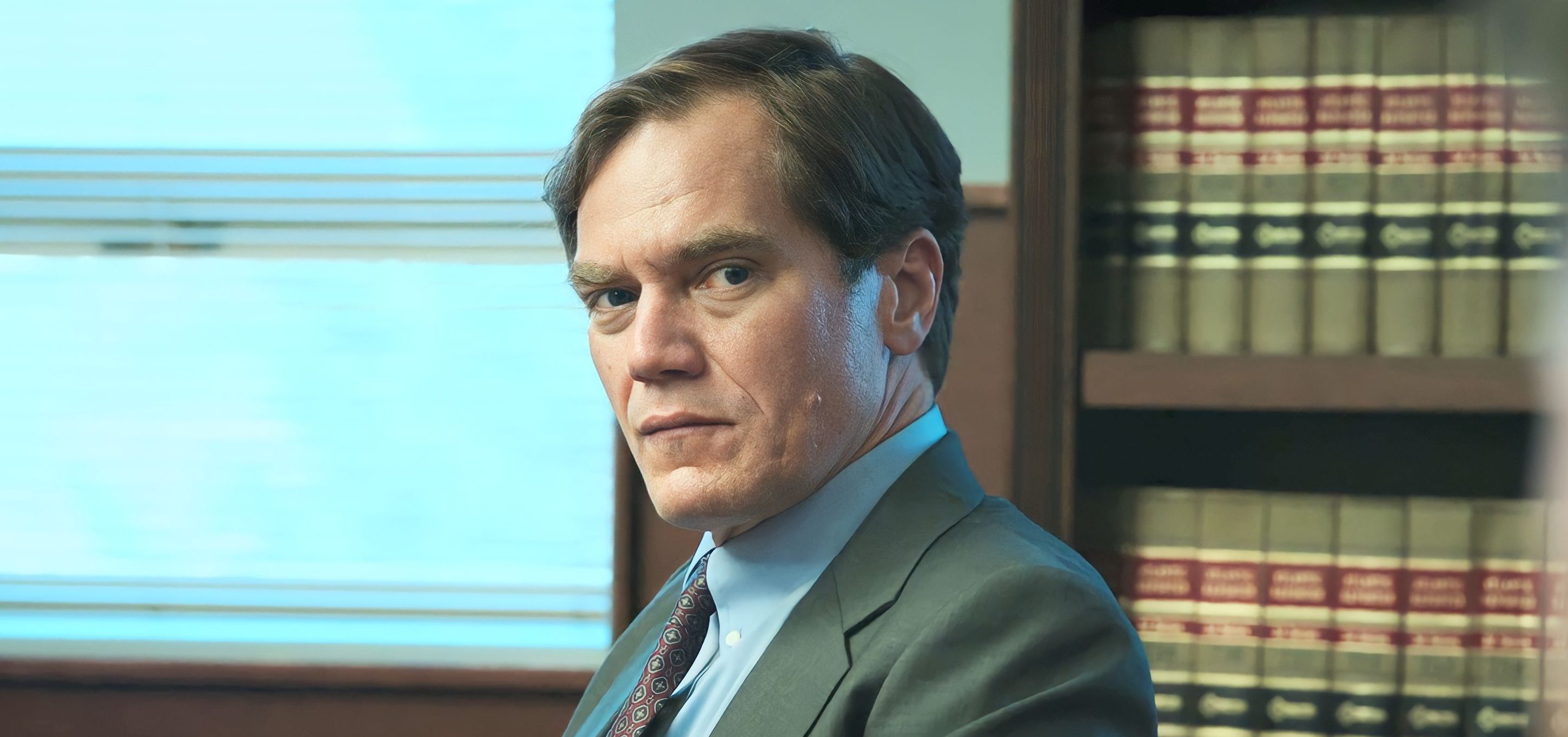The fourth episode of Showtime’s crime series ‘Waco: The Aftermath,’ titled ‘Conspiracy,’ follows the progression of the Waco trial as Dan Cogdell tries to find out what really happened to the front doors of Mount Carmel Center after the building was burnt down. Carol Howe settles in Elohim City and she informs Gary Noesner that she has safely reached her destination. Kathy Schroeder turns against her former allies and friends, forcing Cogdell to seek the testimony of an unexpected witness. The engrossing episode ends with ambiguous decisions the defense makes. If you are intrigued about the same, let us share our take on it! SPOILERS AHEAD.
Waco: The Aftermath Episode 4 Recap
‘Conspiracy’ begins with Carol settling in Elohim City, where she encounters the grandson of the founder of the German Nazi Party. She calls Gary and tells him that there isn’t anything to worry about her. The Waco trial continues as the lead prosecutor Bill Johnston produces several witnesses to establish the Branch Davidians started firing gunshots during the siege. He brings the enormous amount of weapons collected from the Mount Carmel Center to the court to establish that the religious sect had intentions to start and fight a war. Cogdell asks the witnesses about the two front doors of the center, only to not receive a satisfactory response from any of them.

In flashback scenes, George Roden called Vernon Howell to inform him that he is digging up his mother Lois Roden’s dead body to resurrect her. George challenged Vernon to resurrect her since the former wanted the one succeeding in the endeavor to become the next leader of the Branch Davidians. Vernon met an officer to charge George with corpse abuse, only for the latter to ask the former to collect evidence. Vernon went to the Mount Carmel Center with a group, heavily armed, to take photographs of the dug-up corpse. Meanwhile, George encountered them and a shootout ensued between the former and Vernon’s group. The authorities arrived at the scene in no time and arrested the shooters.
The jurors of the Waco trial get threatened by an organization named FIJA. Cogdell worries that the jurors will think that the defendants are associated with the organization, which will most likely create bias among the members of the jury. The prosecution brings a door to the court during the trial and presents the same as one of the two doors of the Mount Carmel Center. When Cogdell asks an official about the second door, the latter replies that the second door melted during the fire since it was made of aluminum. Cogdell takes a magnet and keeps it close to the door, only for it to get stuck to the same. He proves that the door is made up of steel and not aluminum, which brings him back to the second door, which couldn’t have melted since it was made up of steel as well.
Kathy Schroeder testifies against her former allies Clive Doyle, Ruth Riddle, Livingstone Fagan, and Paul Fatta. She testifies that David Koresh conditioned everyone at the Mount Carmel Center to have a death wish and fight against the federal agencies. With the help of Schroeder, Johnston establishes that none of the Branch Davidians was expecting to leave their center alive when the ATF and FBI arrived at the scene.
Waco: The Aftermath Episode 4: Why Do Clive, Ruth, Paul, and Livingstone Want to Testify?
While testifying, Kathy Schroeder reveals that David Koresh conditioned the Branch Davidians to believe that an armed showdown with the “forces of the beast” is inevitable. According to her, Koresh’s followers had a death wish which made them await the confrontation with the ATF and FBI. She adds that Koresh asked his followers to kill him and open firing at the federal officials to provoke the latter to kill the members of the religious sect. As far as Schroeder is concerned, Koresh wanted his followers to die instead of surrendering to their enemies. Her testimony infuriates Clive, Ruth, Paul, and Livingstone, who decide to testify before the court by choosing to represent themselves.

When Schroeder questioned Koresh’s beliefs and intentions, Clive, Ruth, Paul, and Livingstone decide to take advantage of their right to testify to express that the cult leader wasn’t what their former ally testified. They ignore the repercussions of their potential testimonies and how the same can result in them losing the case. The four defendants rekindle their love and loyalty towards Koresh to risk their own lives to express that Koresh didn’t condition them and that their actions were governed by their free will. They also want to testify that Koresh didn’t condition them or other Branch Davidians to have a death wish.
When Clive, Ruth, Paul, and Livingstone decide to self-represent in the trial, Cogdell makes them realize that they should move on from Koresh. He makes it clear that their fight should be to save themselves rather than to whitewash a cult leader who raped a 10-year-old and married Clive’s 13-year-old daughter. As far as Cogdell is concerned, the four defendants are guilty of enabling Koresh to do what he did since they didn’t try to stop him even after witnessing his condemnable actions. The defense attorney asks them to not start fighting a battle they will lose when they can still win the one they are currently fighting.
Why Does Cogdell Want Gary to Testify?
After Schroeder’s testimony, Cogdell astounds his fellow defense attorneys by bringing Gary Noesner to testify in the trial. Cogdell and his team have been trying to establish that the Branch Davidians fired in self-defense when the federal agencies started to attack them. Their case gets almost invalidated by Schroeder’s revelation that the religious group had a death wish. Since no jury would accept the argument of self-defense when the defendants are alleged of having a death wish, Cogdell wants someone to testify that the Branch Davidians weren’t given enough time to make up their minds. Thus, he brings Gary to establish that the federal agencies started their attacks on the religious group with a desire to kill.

Gary has always been vocal about the apparent mistakes the FBI committed during the Waco siege. He believes that he could have rescued Branch Davidians from Mount Carmel Center if the FBI hadn’t moved forward with their attacks with tear gas. As the one who negotiated the rescue of thirty-five Branch Davidians from the compound, he thinks that the Bureau didn’t have to rush their actions. Cogdell may want Gary to testify the same and establish that the federal agencies’ impatience caused the siege rather than the defendants’ actions. He may also try to disprove Schroeder’s testimony that the Branch Davidians had a death wish by citing the rescue of thirty-five individuals from the Mount Carmel Center, led by Gary.
Gary has described the Waco siege as the result of the FBI’s “bad decisions and incompetence.” If Cogdell can make him repeat the same before the jurors, he will be able to blame the federal agency for causing the deaths at the Mount Carmel Center and save the four defendants.
Read More: Is Waco: The Aftermath’s Angie Graham Based on a Real Person?


You must be logged in to post a comment.